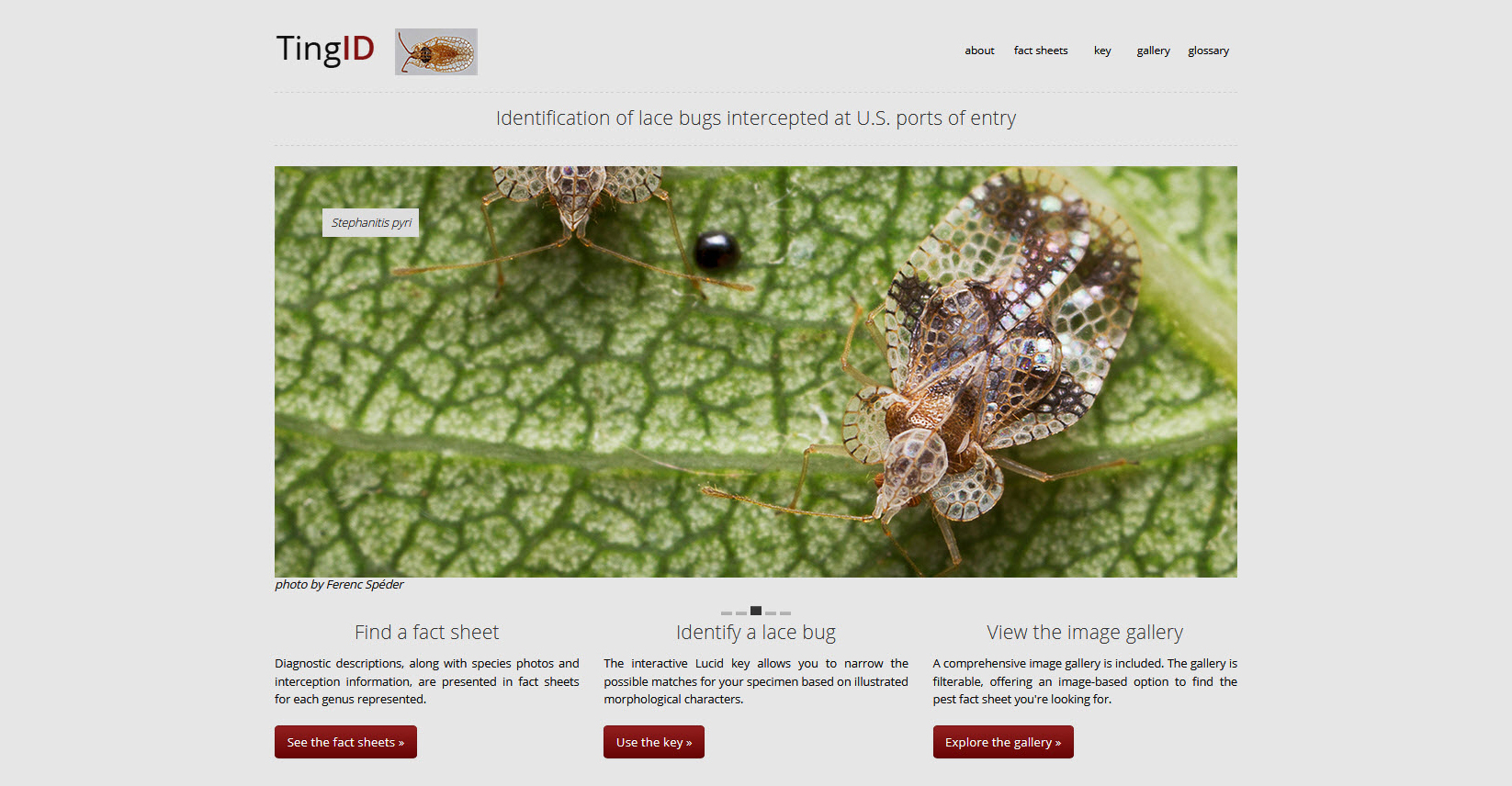
Announcing TingID, a tool for intercepted lace bugs
ITP is pleased to announce the release of TingID, a tool supporting the identification of 50 genera in the family Tingidae, known as lace bugs. The genera covered in this tool were chosen specifically because they include species that have been intercepted on commodities at U.S. ports of entry. Lace bugs are a concern to PPQ because they are known to cause damage to agricultural crops, ornamentals, and fruit-bearing shrubs and small trees. Lace bug adults and nymphs generally feed in groups on the underside of leaves, causing pale stippling, deformity, and plant decline.
Many tingid species are deemed by APHIS PPQ to be quarantine significant. However, nearly 25% of intercepted lace bug specimens have been identified only to the family level and 13% only to genus, triggering quarantine actions that can delay movement of commodities. Species-level identification avoids these unnecessary quarantine actions by linking specimens with their most appropriate quarantine or non-quarantine status. TingID is designed to enable rapid identification of lace bug specimens encountered at U.S. ports, thereby facilitating action on infested imported commodities.
TingID includes a variety of resources to support identification of intercepted lace bugs:
- filterable image gallery of lace bug species
- searchable fact sheets featuring diagnostic characters
- an interactive Lucid key
- species-level interception and quarantine information
- lace bug morphology diagrams